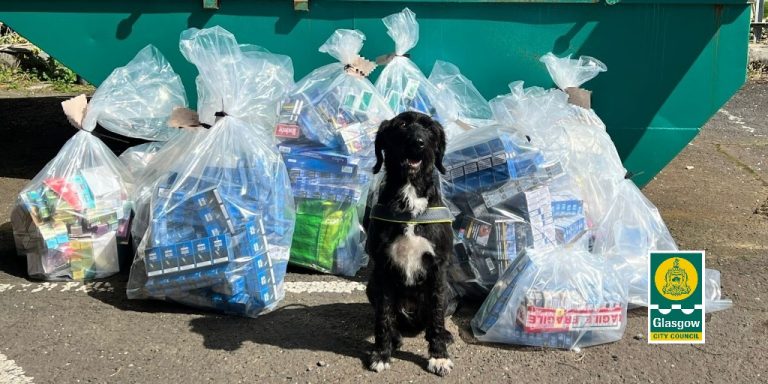Somewhat alarmingly, the convenience retail market’s share of the vaping market appears to be shrinking rather than growing. Does this represent one of the biggest missed opportunities of all time? And what can the sector do to start reclaiming its fair share?
By Antony Begley
On paper, the vaping market is tailor-made for convenience stores. Long opening hours and convenient locations alone should have been enough to make the local retailing sector the channel of choice for the UK’s 3.2 million vapers. With such a dominant share of the tobacco category (45% of the market), convenience retailers should have been in pole position to capitalise on the phenomenal growth of the vaping category over the last four or five years.
But that’s not what happened.
As highlighted at SLR’s inaugural Cloud Chasing event around this time last year, the convenience sector only owned around 17% of what was a billion-pound market. The rest went to specialist vapeshops, online retailers and, to a much lesser extent, supermarkets.
There was clearly a lot of work to be done if convenience was to reclaim its fair share of this massive category. So has progress been made over the last year? The massively disappointing answer to that has to be a resounding ‘no’.
Figures presented by JUUL Labs at SLR’s recent #ThinkSmart3 event suggest strongly that not only is the convenience sector not growing its share, it’s actually losing share at an alarming rate and now accounts for only around 10% of the market. Even more concerningly, it’s losing share not to vapeshops or online retailers but to the supermarkets.
The figures quoted by JUUL Labs showed that the UK market is set to more than double over the next four years from the current level of what they believe is a £2bn market to a massive £4.3bn – but the biggest benefactors of that growth unless things change dramatically will be the major multiples.
The JUUL Labs data clearly shows that convenience is losing share rapidly to the multiples and the scale of that lost opportunity is enormous. At current rates, by 2022 the convenience channel will account for just £344m of that £4.3bn market, or 8%. If convenience was to get its ‘fair share’ of the market – 45% – that figure would be much closer to £2bn every year.
What’s going wrong?
The key driver behind convenience losing share to the multiples has undoubtedly been the rapid and efficient adoption of ‘pod’ based vaping systems by the supermarkets. JUUL Labs alone went from a standing start to be the number one pod player in the UK in well under a year; this growth was principally driven by securing listings in the supermarkets.
Many of the other major players have also secured listings in the channel with the net effect that the supermarket share of vaping is growing strongly – at the expense of convenience.
Another major challenge is the elephant in the room, the scare stories from across the water in the United States. That issue became so significant that the UK Vaping Industry Association (UKVIA) was forced to produce a consumer media campaign calling for ‘facts not fiction’.
UKVIA took full page ads in national newspapers including The Metro to target what it calls “misinformation and scare-stories which threatened to push British vapers back to cigarettes”.
At its heart, the cases of illness in the US have been linked to black market batches of THC, the psychoactive component of cannabis. The campaign set out to reassures the UK’s vapers that British vaping standards are robust, and products are highly regulated.
Spokesperson for the UKVIA, John Dunne, said: “It may seem like a bold move, but we believe that the stakes are high enough to justify it. Vaping represents one of the most vital harm reduction opportunities for public health in decades. The UKVIA is determined to protect that potential, as well as protecting the vapers who have already made the life-changing switch from cigarettes. To do this, the British public needs facts not fiction, and this is exactly what our campaign delivers.”
In the wake of the US media storm, Public Health England once more reiterated that it views vaping as “95% safer than cigarettes”.
UK vape firm VPZ, which has over 125 stores, backed the campaign. Director of Compliance and Manufacturing Doug Mutter said: “We need to call out these scare stories for what they are, as they run the risk of driving people back to smoking which would have a massive impact on public health. We’re already seeing people coming into our stores asking questions, and our staff are happy to take the time to correct the misinformation, but I’m very worried that not everyone will do that.”
Why should we care?
There are two key reasons why convenience retailers should be addressing the terrible performance of the channel in vaping: health and sales.
Steve Lintott, UK Head of Field Sales at JUUL Labs describes vaping as “the biggest public health and commercial opportunity of the last 50 years for convenience stores.”
The harm reduction potential of vaping is widely recognised and JUUL Labs believes we need alternatives to smoking. Yet while smoking rates have been in terminal decline since 2011, there has been no discernible change in smoking prevalence among adults in Scotland.
ONS figures show that around 14.7% of UK adults still smoke, equating to 7.2 million smokers in the UK spending £12bn a year. Consequently, if tobacco continues to decline with no alternative available, in 10 years’ time the tobacco market will be worth just 40% of its current value. To put that into context, that equates to a decrease in sales of £107m every month. And £107m is more than the total Retail Sales Value of brands like Mars Bars, M&Ms and Pot Noodle [The Grocer Britain’s Biggest Brands 2019].
How do we fix it?
The good news is that the vaping market has plenty of room for growth and there remains a huge opportunity for local retailers to get back in the game.
The category is in 500% growth and, according to Public Health England figures, a whopping 60% of tobacco smokers want to switch.
The key to beginning to unlock that growth comes down to a single challenge: retailers giving the category the time, effort, investment and space in-store that it deserves.
A strong range of leading brands, well presented in-store coupled with a good staff training programme is all that’s required to start bringing new vaping shoppers to your door. That £1.6bn growth opportunity is a tantalising prize and once that no retailer can afford to ignore.








